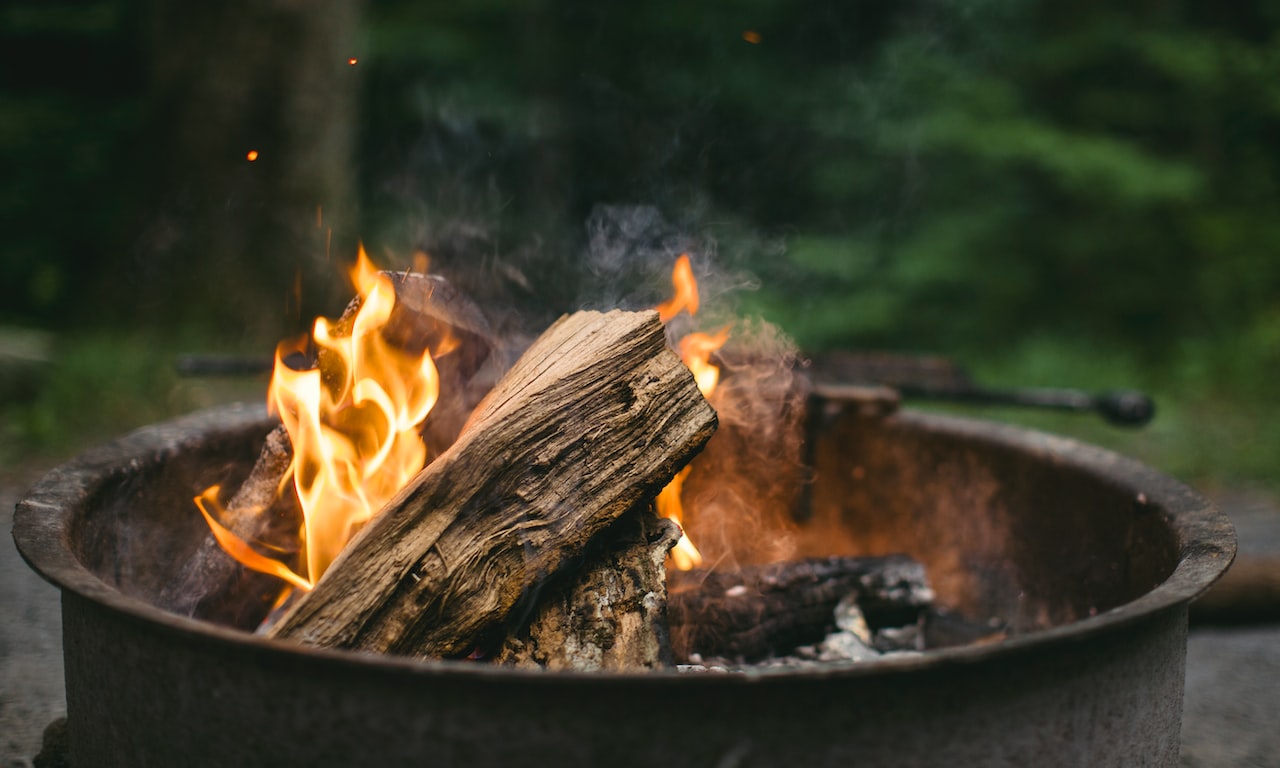Discover the Benefits of DIY Fire Starters
For those who love the great outdoors, having a dependable fire starter is absolutely essential. Whether you’re an avid camper, survivalist, or simply enjoy spending time in nature, a fire starter can be a game-changer in emergency situations or when you need to keep warm during your outdoor adventures. While there are plenty of fire starters available for purchase, there are numerous advantages to creating your own. Not only does it save you money, but it also allows you to personalize the materials and design a fire starter that perfectly fits your unique needs. In this article, we will delve into the significance of having a reliable fire starter and the multitude of benefits that come with crafting your own.
Exploring Different Types of DIY Fire Starters
When it comes to starting a fire outdoors, having reliable fire starters can make a world of difference. In this article, we will delve into two popular types of DIY fire starters: wax-based fire starters and dryer lint fire starters. Each type has its own unique advantages and disadvantages, so it’s crucial to understand the necessary materials, step-by-step instructions, and helpful tips for successful use.
Wax-based Fire Starters
Wax-based fire starters are a favored choice among outdoor enthusiasts due to their effectiveness and ease of use. To create your own wax-based fire starters, you will need a few materials, including wax, sawdust or wood shavings, and a container for melting the wax. The step-by-step instructions involve melting the wax, combining it with the sawdust or wood shavings, and pouring the mixture into molds to solidify. Once the fire starters are ready, they can be effortlessly ignited to start a fire. To ensure optimal results, it is recommended to store the fire starters in a waterproof container, use multiple fire starters for larger fires, and ensure proper ventilation when melting the wax.
Dryer Lint Fire Starters
Another popular option for DIY fire starters is utilizing dryer lint. This method is not only cost-effective but also takes advantage of a readily available material. To create dryer lint fire starters, you will need materials such as dryer lint, cardboard egg cartons, and wax. The step-by-step instructions involve filling each compartment of the egg carton with dryer lint, melting the wax, and pouring it over the lint to saturate it. Once the wax has solidified, each compartment can be cut into individual fire starters. While dryer lint fire starters are convenient and lightweight, they may not burn as long as wax-based fire starters. It’s important to carefully consider the advantages and disadvantages of using dryer lint before deciding which type of fire starter to utilize.
DIY Fire Starters: Natural and Effective
When it comes to starting a fire, having reliable and natural fire starters can be incredibly helpful. Two popular options that you can easily make at home are pinecone fire starters and egg carton fire starters. Not only are they simple to create, but they also offer numerous benefits. Let’s dive into the details of how to make them and why they are so effective.
Pinecone Fire Starters: Harnessing Nature’s Flammable Resin
Pinecones are excellent fire starters due to their high resin content, which makes them highly flammable. To create your own pinecone fire starters, gather the following materials:
- Pinecones
- Wax (such as candle wax or beeswax)
- String or twine
- Double boiler or a heat-safe container and a pot
- Optional: essential oils for fragrance
Follow these step-by-step instructions to make pinecone fire starters:
- Melt the wax in a double boiler or a heat-safe container placed in a pot of simmering water.
- While the wax is melting, tie a string or twine around the base of each pinecone, leaving a long tail for easy handling.
- If desired, add a few drops of essential oils to the melted wax for a pleasant scent.
- Dip each pinecone into the melted wax, ensuring it is fully coated.
- Hold the pinecone above the wax for a few seconds to allow any excess wax to drip off.
- Place the coated pinecones on a sheet of wax paper or a cooling rack to dry and harden.
- Once the wax has solidified, your pinecone fire starters are ready to use.
Using pinecone fire starters offers several benefits. The resin in the pinecones helps them burn longer and produce a hotter flame, making them highly effective fire starters. Additionally, the natural fragrance of pinecones can add a pleasant aroma to your fire.
Egg Carton Fire Starters: Repurposing for Easy Ignition
Don’t throw away your empty cardboard egg cartons! They can be repurposed into effective fire starters. Here’s what you’ll need:
- Empty cardboard egg carton
- Lint or sawdust
- Wax (such as candle wax or beeswax)
- String or twine
- Double boiler or a heat-safe container and a pot
Follow these step-by-step instructions to make egg carton fire starters:
- Collect lint from your dryer or gather sawdust from woodworking projects.
- Fill each compartment of the egg carton with the lint or sawdust.
- Melt the wax in a double boiler or a heat-safe container placed in a pot of simmering water.
- Pour the melted wax over the lint or sawdust, ensuring each compartment is fully saturated.
- Allow the wax to cool and solidify.
- Cut or tear apart each compartment to create individual fire starters.
Using egg carton fire starters offers several advantages. The cardboard carton acts as a convenient container, making it easy to transport and store the fire starters. The combination of lint or sawdust with wax creates a highly flammable material that ignites easily and burns for a sufficient amount of time to start a fire.
Ensuring Safety: Tips and Precautions for DIY Fire Starters
When handling and storing DIY fire starters, it is crucial to prioritize safety. To begin with, it is essential to keep these fire starters away from flammable materials and sources of ignition. For safekeeping, store them in a cool, dry place, preferably in a metal container with a tight lid to prevent accidental fires. Additionally, always handle DIY fire starters with clean and dry hands to avoid any unwanted reactions.
Preventing Accidents: Important Measures to Take
Using DIY fire starters requires taking certain precautions to prevent accidents. Before igniting the fire starter, ensure that the surrounding area is clear of any flammable objects or debris. It is advisable to keep a fire extinguisher or a bucket of water nearby in case of emergencies. To protect yourself, wear protective gloves and goggles to avoid any injuries. Lastly, never leave a burning fire starter unattended and make sure to fully extinguish it before leaving the area.
Outdoor Usage: Recommendations to Follow
When using DIY fire starters outdoors, it is important to keep specific recommendations in mind. Choose a well-ventilated area that is away from buildings, trees, and other structures. Avoid using fire starters during windy conditions as it can increase the risk of spreading the fire. Always adhere to local regulations and guidelines regarding open fires and ensure you have the necessary permits, if required. Lastly, be mindful of the environment and properly clean up any debris or ashes after use.
Frequently Asked Questions
1. Why should I consider making my own fire starters?
Making your own fire starters offers several benefits, including saving money and allowing you to personalize the materials to fit your needs.
2. What are the different types of DIY fire starters?
There are two popular types of DIY fire starters: wax-based fire starters and dryer lint fire starters.
3. How do I make wax-based fire starters?
To make wax-based fire starters, you will need wax, sawdust or wood shavings, and a container for melting the wax. The step-by-step instructions involve melting the wax, combining it with the sawdust or wood shavings, and pouring the mixture into molds to solidify.
4. How do I make dryer lint fire starters?
To make dryer lint fire starters, you will need dryer lint, cardboard egg cartons, and wax. The step-by-step instructions involve filling each compartment of the egg carton with dryer lint, melting the wax, and pouring it over the lint to saturate it.
5. What are the advantages of using pinecone fire starters?
Pinecone fire starters burn longer and produce a hotter flame due to the high resin content in pinecones. They also add a pleasant aroma to your fire.
6. How do I make pinecone fire starters?
To make pinecone fire starters, you will need pinecones, wax, string or twine, and a double boiler or heat-safe container. The step-by-step instructions involve melting the wax, tying a string around each pinecone, dipping the pinecones in the melted wax, and allowing them to dry and harden.
7. How do I make egg carton fire starters?
To make egg carton fire starters, you will need an empty cardboard egg carton, lint or sawdust, wax, and a double boiler or heat-safe container. The step-by-step instructions involve filling each compartment of the egg carton with lint or sawdust, melting the wax, pouring it over the lint or sawdust, and allowing it to cool and solidify.
8. What safety precautions should I take when using DIY fire starters?
It is important to keep DIY fire starters away from flammable materials and sources of ignition. Store them in a cool, dry place in a metal container with a tight lid. Handle them with clean and dry hands to avoid unwanted reactions.
9. How can I prevent accidents when using DIY fire starters?
Before igniting the fire starter, ensure the surrounding area is clear of flammable objects or debris. Keep a fire extinguisher or bucket of water nearby. Wear protective gloves and goggles. Never leave a burning fire starter unattended and fully extinguish it before leaving the area.
10. What recommendations should I follow when using DIY fire starters outdoors?
Choose a well-ventilated area away from buildings, trees, and other structures. Avoid using fire starters during windy conditions. Adhere to local regulations and guidelines regarding open fires. Clean up any debris or ashes after use.











